Wherever there are humans, there are also the footprints of dogs, and Antarctica is no exception. When humans began to explore Antarctica, it wasn’t long before dogs appeared on this icy continent.
On February 17, 1899, the exploration ship “Southern Cross” carried 97 members of the British Antarctic Expedition to Cape Adare in the Ross Sea region of Antarctica. This moment was not a significant milestone in history, as humans had already set foot on the Antarctic continent four years earlier. However, it marked the first time dogs had arrived in Antarctica.
As soon as they landed, a snowstorm hit, and seven members of the scientific expedition were stranded and had to live in tents, unable to withstand the continuously low temperatures. The sled dog team was then brought ashore, becoming the hope for everyone at that moment. The scientific team, shivering, brought the dogs into the tent to cuddle with them, and the dogs helped restore enough warmth for survival during the four-day snowstorm.
In this way, on their first day in Antarctica, dogs saved the lives of those trapped in the snowstorm.
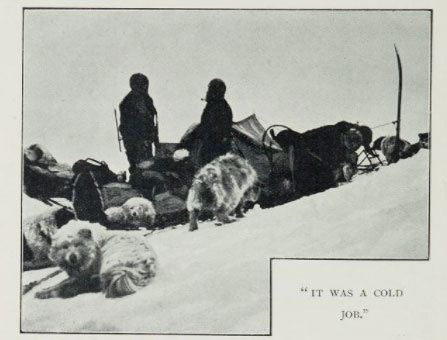
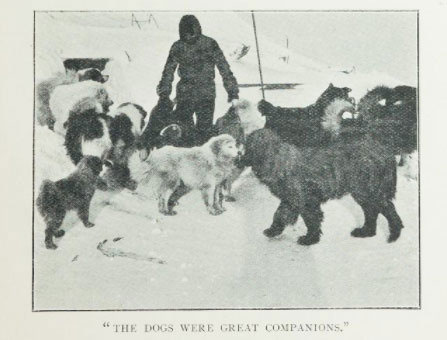
Image of the “Southern Cross” expedition team.
Most of the sled dogs brought to Antarctica were born in the Arctic. The Arctic Circle is home to diverse ethnic groups and a variety of dog breeds, most of which are trained as sled dogs. Compared to horses and reindeer, sled dogs are better adapted to the harsh, frigid environment. They are not picky eaters; to endure the -40 degree conditions of Arctic winters, they can eat anything from biscuits to canned food, frozen seal meat, or any leftovers from humans. Thus, bringing dogs to Antarctica as a means of transportation was a better choice than horses and reindeer.

Five main breeds (from left to right): Samoyed from the Yamal Peninsula, Siberian Husky from Kolyma, Alaskan Malamute, Canadian Malamute, Greenland Malamute.
Before exploring Antarctica, humans had successfully ventured into the Arctic multiple times using sled dogs. Among the various exploration activities aimed at conquering the Arctic, one individual particularly favored using sled dogs: Roald Amundsen from Norway. During the North West Passage expedition from 1903 to 1906, Amundsen spent two winters on King William Island in northern Canada.
During this time, he learned survival skills from local Inuit, and more importantly, he mastered the sled dog team. This was crucial for him to compete with Scott for the title of “the first man at the South Pole.” In the Antarctic expeditions of the early 20th century, sled dogs, horses, and mechanical tractors were all brought to Antarctica. Later practices proved that sled dogs were the most reliable means of transportation.
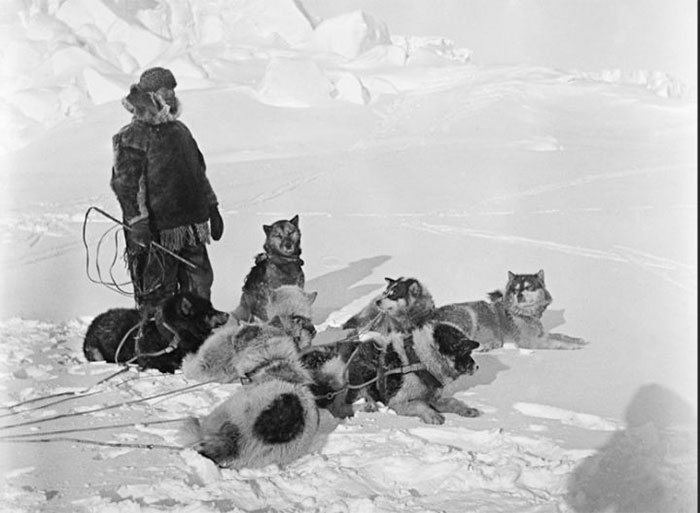
Amundsen’s sled dog team
On October 19, 1911, a team of five, along with 52 Greenland sled dogs, carried Amundsen on a three-month journey to Antarctica. When they returned to their starting camp on January 25 of the following year, only 11 sled dogs made it back.
Forty-one sled dogs perished due to accidents and illness, or because they consumed too much food and resources, leading Amundsen to order their euthanasia. The lives of these forty-one dogs were sacrificed to save Amundsen and the others, and these sacrifices brought Amundsen the glory that could be recorded in the chronicles of humanity.
Amundsen’s rival, Scott, did not use sled dogs. He chose to use horses as a means of transport. However, these horses struggled to withstand the low temperatures and snowstorms, and all of them perished after only covering a quarter of the distance. Scott then had to rely on human strength to pull sleds towards the South Pole. Ultimately, he not only lost the race but also perished on the ice in Antarctica on his way back.
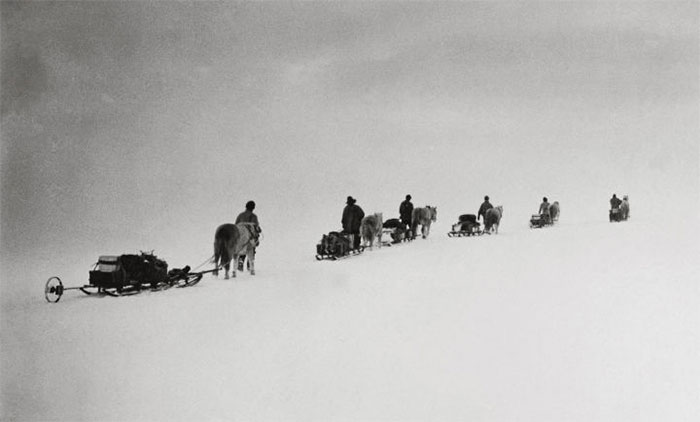
These horses struggled to withstand low temperatures and snowstorms
Until the 1950s, sled dogs still played a significant role in Antarctic scientific expeditions. While helicopters and fixed-wing aircraft began to be used for transportation in Antarctica, these devices were not yet fully adapted to the harsh conditions of the continent. Their designs at this time were not truly optimized for Antarctica and would take decades to improve. During this period, many scientific expedition teams still chose to use sled dogs as part of their transportation.
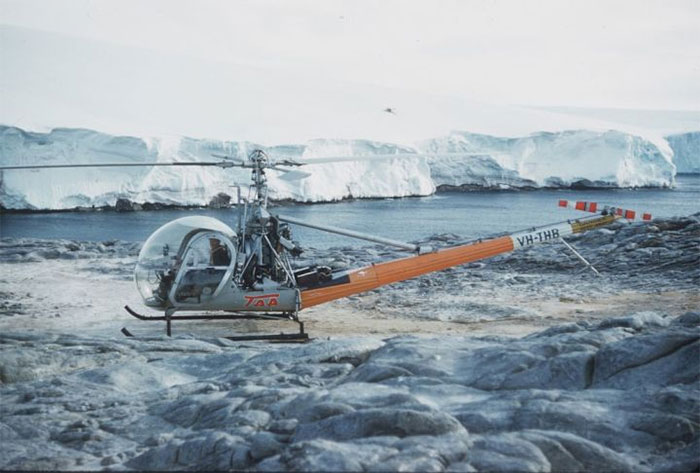
A 1960 helicopter in Antarctica with limited capacity
In 1957, Japan’s first Antarctic observation team arrived in Antarctica. However, an accident occurred when the Antarctic research vessel “Zonggu” was surrounded by sea ice. The members of the Japanese team had to evacuate by helicopter, leaving behind 23 Sakhalin Huskies in Antarctica. At that time, everyone thought these dogs would surely die.
However, surprisingly, when the scientific expedition team returned to the Antarctic station after a year, they discovered that two dogs named Kata Inutaro and Jiro were still alive! This is the prototype story for the movie “Antarctic,” starring Ken Takakura. Statues of these dogs can be found throughout Japan, with the most famous being a group of statues related to the scientific research in Antarctica originally displayed at Tokyo Tower.
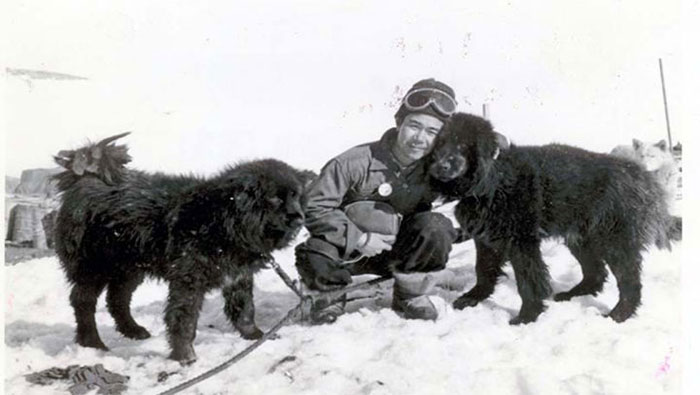
Members of the Japanese team and dogs during the Antarctic scientific expedition
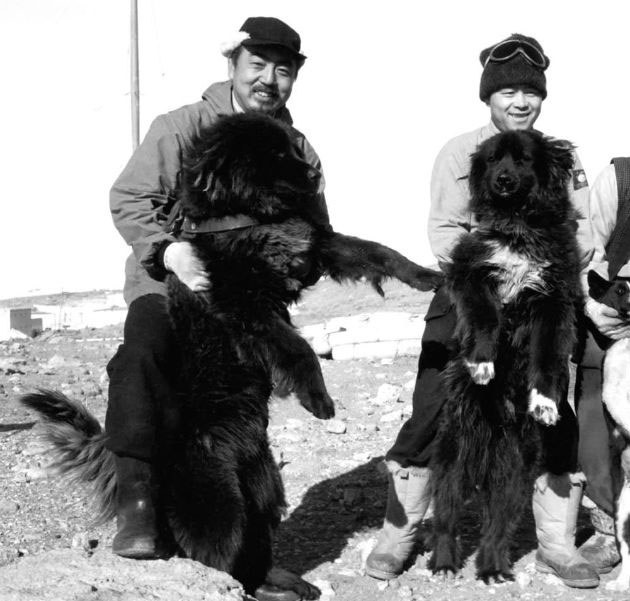
Kata Inutaro and Jiro
After the 1950s, with the rapid and continuous advancement of technology such as airplanes, helicopters, and snowmobiles, sled dogs gradually retreated from the stage of history. In 1956, the first DC-3 cargo plane landed in Antarctica, less than half a century after Amundsen first arrived in Antarctica. However, many scientific expedition teams still maintained their sled dog teams, including those from Australia and the UK.

The first DC-3 cargo plane landing in Antarctica
In the 1980s and 1990s, a small number of sled dogs were kept at the Rothera Research Station in the UK, primarily to provide traditional entertainment, allowing new generations of scientific researchers to continue experiencing the glory and suffering of the “heroic age” of Antarctica. However, humans no longer needed to exhaust sled dogs with whips in snowstorms, nor did they need to personally euthanize their beloved dogs in desperate situations.
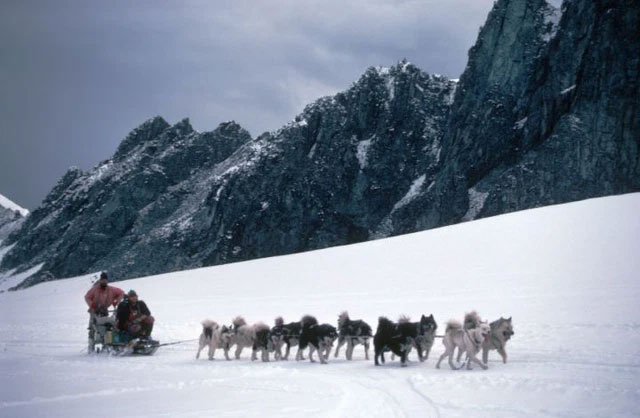
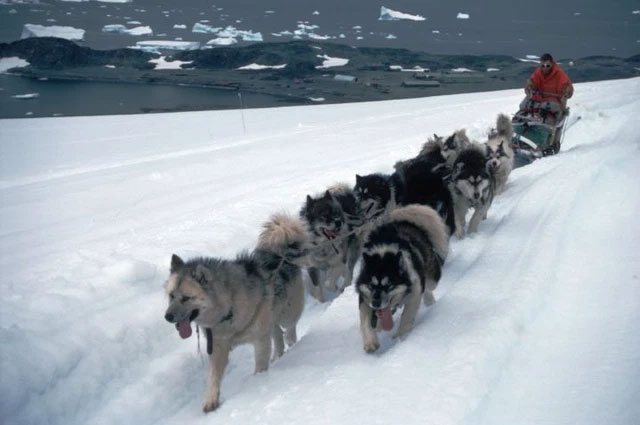
Sled dogs in Antarctica.
In 1990, American Will Steger led his sled dog team to complete the last Antarctic record achievable by humans and sled dogs. This sled team traversed the entire Antarctic continent, covering 3,741 miles. However, this journey still resulted in a significant number of sled dogs dying. Of the 36 sled dogs that set off with the team, only 12 survived the ordeal. After this, sled dogs never appeared in other challenges in Antarctica. To achieve their own accomplishments, humans sacrificed their companions. Such glory should not be called “great.”

On August 10, 1992, three puppies were born at Mawson Station, an Australian Antarctic research station. They may be the last sled dogs ever born in Antarctica in human history. In Madrid in 1991, countries around the world signed the “Antarctic Treaty Protocol on Environmental Protection.” To protect the Antarctic environment, and as a humane action towards dogs, the treaty prohibits humans from bringing sled dogs to Antarctica anymore. Since 1994, when the last litter of sled dogs was removed from Antarctica, the continent has also been devoid of dogs.
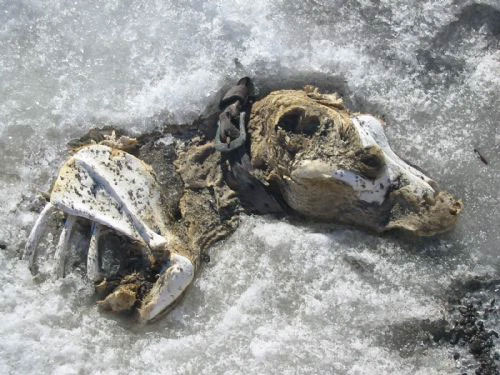
Bones of a sled dog that died in Antarctica.


















































